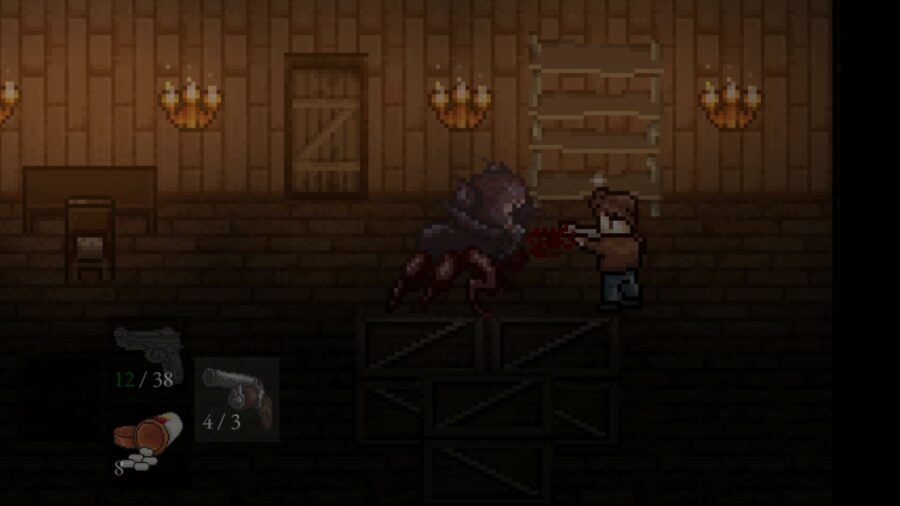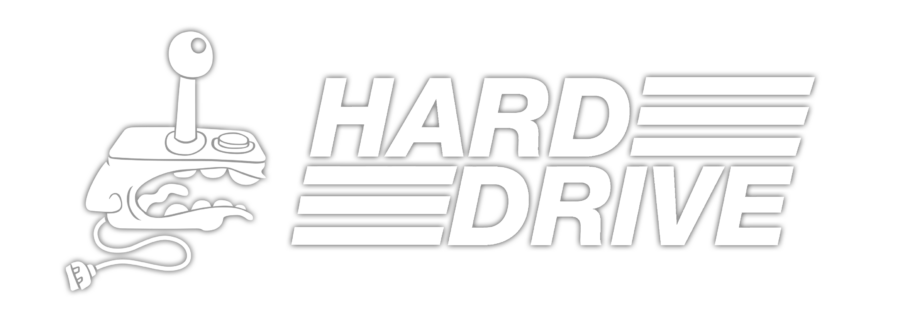I didn’t intend for this to happen, but the first game I played from 2025 was about rich folks getting a lot of working-class people killed. It feels right.
As I’ve talked about before, indie revivals of “classic” survival horror are a dime a dozen, particularly on Steam. The worst of them play like their creators have never experienced any form of media besides old survival horror games, while the best – Signalis, Crow Country – manage to feel new despite their obvious inspirations.
Dead of Darkness, by solo German developer Markus Neuert, is somewhere closer to the top end of the scale. It initially comes off as a fan-made pixel “demake” of the original Resident Evil games, especially since you spend the first hour hunting for themed keys in a suspiciously familiar country mansion. I almost wrote it off as a simple imitation.
Once I escaped from the first area, DoD got more interesting. The map opens up, you start fighting some uniquely disturbing monsters, and the plot deepens, switching from a standard zombie thriller to a Lovecraftian family drama. (The basic premise, once you know more about it, would make for a hell of a Delta Green campaign.) At the same time, DoD never loses sight of its survival horror roots, which works both for and against it.

In 1985 England, private investigator Miles Windham receives a strange message from a doctor named Charles Graham. If Miles comes to Charles’ family home, Charles can provide Miles with new information about the suspicious accident that killed Miles’ daughter several years ago.
The Grahams’ estate is on the isolated Velvet Island in the Celtic Sea, where the family operates a private clinic. Miles arrives the next day, alongside a newly hired nurse named Olivia Greene, to discover that Charles is missing. Before Miles can investigate further, the estate is attacked by a horde of ghouls. Miles and Olivia are forced to fight for their lives, save who they can, and along the way, discover the secrets of Velvet Island.
If you’ve ever played an old-school survival horror game, you’ll be on comfortable ground with DoD from the start. It’s a top-down 2D shooter with sharply limited resources, so you have to pick your battles carefully. Even your knife eventually gets dull and has to be resharpened.
One of DoD’s big additions to the overall formula, since Miles is a detective, is an enhanced vision mode that highlights every interactive object around him. That lets you efficiently sweep an area for resources, files, and flavor text, including those that you might not otherwise think to check.
Miles also keeps track of specific information like keycodes in a Clues tab in your inventory screen, which you can combine with key items or use on objects in your environment. It’s not used as often as I’d like over the course of the game, but it adds some clever detail to what would otherwise be simple tab-A-into-slot-B puzzle mechanics.

The combat and inventory management aren’t as refined, as they’ve been ported straight across from the old ‘90s survival horror formula. You can’t shoot or reload while moving, so Miles is basically a mobile turret emplacement. Most of DoD’s combat is a matter of managing space, so you’ve got room to kill enemies before they can reach you.
You only have 8 inventory slots throughout the game, half of which you’ll usually have to devote to your weapons and ammunition. On your first run through DoD, you’ll end up doing a lot of relay races between your current objective and the closest item box.
In addition, many enemies and traps can inflict a variety of temporary status effects like poison, bleeding, or shock, each of which requires a separate, specific item to cure. In practice, it’s easier to just reload a save or wait out a status effect than actually bother to carry the right medical supplies. It’s the same kind of inventory micromanagement that was obnoxious in Signalis, let alone the first couple of Resident Evil games, and it hasn’t gotten any better since then.
You run into this sort of problem with many faux-retro survival horror games. They’ve deliberately carried forward some of the jank that characterized the genre in the ‘90s, despite 30 years of quality-of-life improvements, and you have to be comfortable with that in order to enjoy the experience.

DoD’s overall presentation is a harder pill to swallow, though. It’s got a lot going for it as a horror game, like some impressive monster design, a couple of good scares, a talented cast of voice actors, and a knack for environmental storytelling.
The problem is the graphics. DoD is good at communicating useful information at a glance, which is an underrated skill in game design, but the simplicity of its character design often works against the mood it’s trying to build. Every human character looks like a recycled sprite from Super Dodge Ball, which can’t help but remind me of 2000s-era webcomics. Some scenes are just as disturbing as they’re meant to be, particularly the special animations that play whenever Miles dies, but I still found myself laughing at the wrong times.
I’ve got my issues with Dead of Darkness, but there’s just as much good as bad here. It’s challenging, ambitious, and well-written. The game ends on a blatant sequel hook, and there’s enough potential in both the design and setting that I’d be genuinely interested in seeing what Neuert could do with a follow-up. If he and his team get the chance to refine their approach, especially with more elaborate sprites, this could be the start of a solid horror franchise.
[Dead of Darkness, published and developed by Retrofiction Games, is now available for PlayStation 4&5, Xbox Series X|S, Xbox One, Nintendo Switch, and Steam for $15.99. This column was written using a Steam code sent to Hard Drive by Retrofiction Games.]




